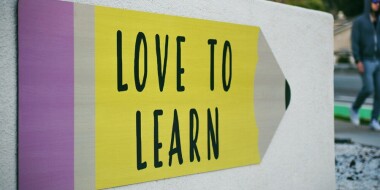Today we are living in the era of gamification. Not a single English lesson seems to go without a game. We all know how important and useful various board games are. Today’s article is going to be on how we can use them in our lessons.
Roll and Move Games
In this game, we usually have dice or a coin to flip. The dice/coins show the number of steps we have to take. The idea is to get to the finish square as fast as we can. This game is perfect for pairs and small groups. Otherwise, students are likely to get bored while waiting for their turn.
The best way to use these games is to download a template and complete it with the grammar/vocab/structures we want our students to practice.
Blocks
Children’s building blocks are perfect when teaching them word order in sentences. It is as simple as that – stick words on the blocks (one block – one word). Ask your students to make positive/negative sentences or questions. If possible, use one colour for one part of speech. His will add visuals to your grammar.
Checkers
Use a template and add the tasks to the board or prepare a task (gap-fill, multiple choice, etc.) before a student has a go. The element of gamification adds emotion to dull tasks, so students become more careful and motivated in coping with them.
Scrabble
This one would be nice for higher level students (intermediate+) who have a nice range of vocabulary. The rules are simple: make a word using letters and get as many points as you can. Each turn a player takes seven tiles from the bag and tries to make a word. If they cannot, they can exchange tiles or pass. Different tiles have a different value. The game is suitable for 2 to 4 players.
Uno
This one can be used from the very first lesson with your beginner students. The idea of the game is to get rid of all your cards as fast as possible. The deck is put on the desk and one card is flipped over. Each student has seven cards. A student must put a card on the flipped one. It should have the same colour or number. So it means that we can practice colours and numbers here. What is more, we can add any lexis we need to revise: say a word from the topic “Environment” and off you go. When you have one card left, you shout “UNO!” or “ONE CARD!” There are some nasty surprises in this game so it is not so easy to win, anyway.
Dixit
Nice game for 3 to 6 players. You have to deal with associations here. A presenter puts a card on the desk face down. He or she gives an association to what is on their card. The other players put a card with their association to what the presenter has said. The cards are all face down. They are shuffled. Then students vote for the best card which matches the association of the presenter. Everyone gets points. That is where the speaking practice is required. Students can be asked to explain their association or choose a better card.
Apples to Apples
A game similar to Dixit, but deals with sentences, not pictures. Students have to choose a noun card to an adjective card. It is designed for native speakers, so your student should be at least upper-intermediate to succeed in it. You can watch this video to get the idea of how to play it.
Jenga
The game which dares you to pull a block out of a built tower. There is nothing linguistic in it unless you add some linguistic elements to it. There are hundreds of variations:
- write a question on each block; a student answers and pulls a block;
- practice target language — students use flashcards and one particular structure before they have a go;
- write a number on each block. Prepare a task for each number (fill in the gaps, give a synonym, answer a question).
Spoons
This game is fantastic for practising spelling and revising words. However, it needs some preparation. Prepare 20-25 cards for each letter of the alphabet (on the whole you will have 520-650 cards). The cards shouldn’t be big, 5*5 cm is enough. To last longer, it is a good idea to laminate your cards.
Put all the cards on the table face up. Put some plastic spoons on the table. The number of spoons should be one spoon fewer than the number of students playing (if you have 4 students, you prepare 3 spoons). Put a word or a set of words on the board.
Students have to spell the word by looking for the corresponding letters in the pile. When the first student finishes spelling, he or she grabs a spoon. The other students do the same. The last student writes S on a piece of paper. Whoever spells the word “spoon” first losses.






 Олеся Яресько
Олеся Яресько 
 Диляра Биктагирова
Диляра Биктагирова 

 Маргарита Аветисян
Маргарита Аветисян 
